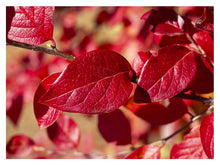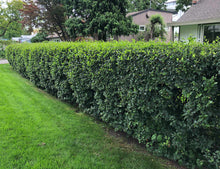Cotoneaster is a genus of woody plants that includes both deciduous and evergreen species. When used for hedges, evergreen varieties are often preferred for year-round privacy and screening. The leaves of cotoneaster are typically small, glossy, and dark green, providing an appealing visual backdrop.
- Size: The size of a cotoneaster hedge can vary depending on the specific species and how it's maintained. Generally, cotoneasters can be pruned to form hedges ranging from 2 to 10 feet in height. The spread can be managed through regular pruning to achieve the desired width.
- Planting: Choose a well-draining soil for planting cotoneaster. It prefers a sunny location but can tolerate partial shade.
- Watering: Cotoneaster generally prefers regular watering, especially during dry periods. However, it is essential to avoid waterlogged conditions, as this can lead to root rot.
- Pruning: Regular pruning is crucial to maintain the desired shape and size of the hedge. Prune in late winter or early spring before new growth begins. Remove dead or diseased branches, and shape the hedge to encourage bushier growth.
- Fertilization: Cotoneaster is not particularly demanding when it comes to fertilization. However, applying a balanced fertilizer in the spring can promote healthy growth.
- Pest and Disease Control: Keep an eye out for common pests like aphids and scale insects. Treat any infestations promptly. Cotoneaster is generally resistant to many diseases, but proper care can prevent issues.
- Mulching: Apply a layer of organic mulch around the base of the hedge to conserve moisture, suppress weeds, and provide nutrients as it decomposes.




